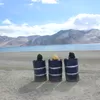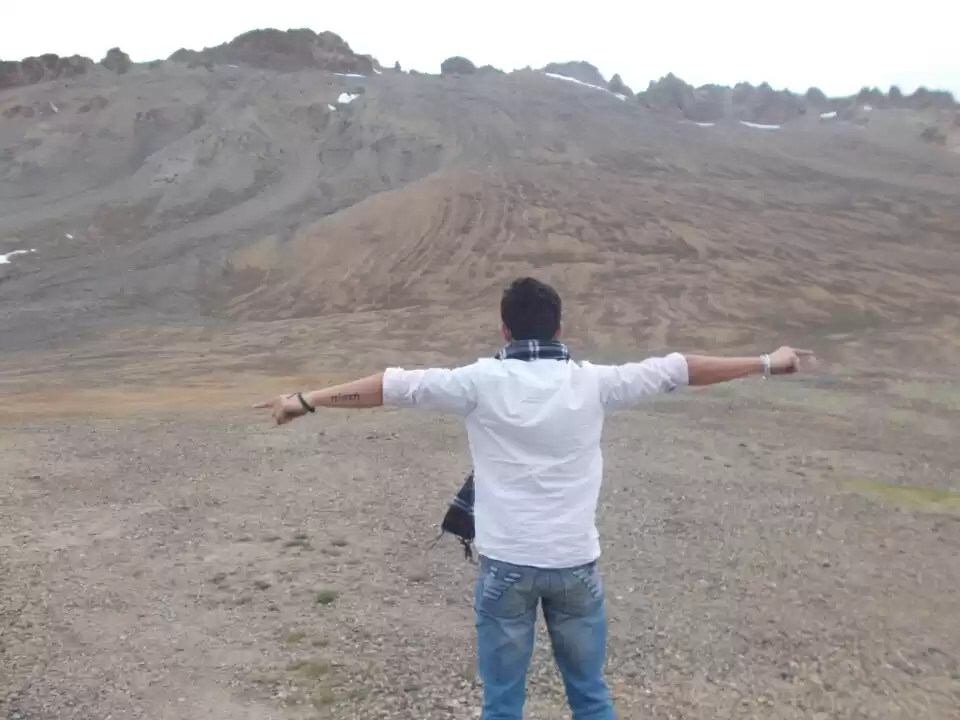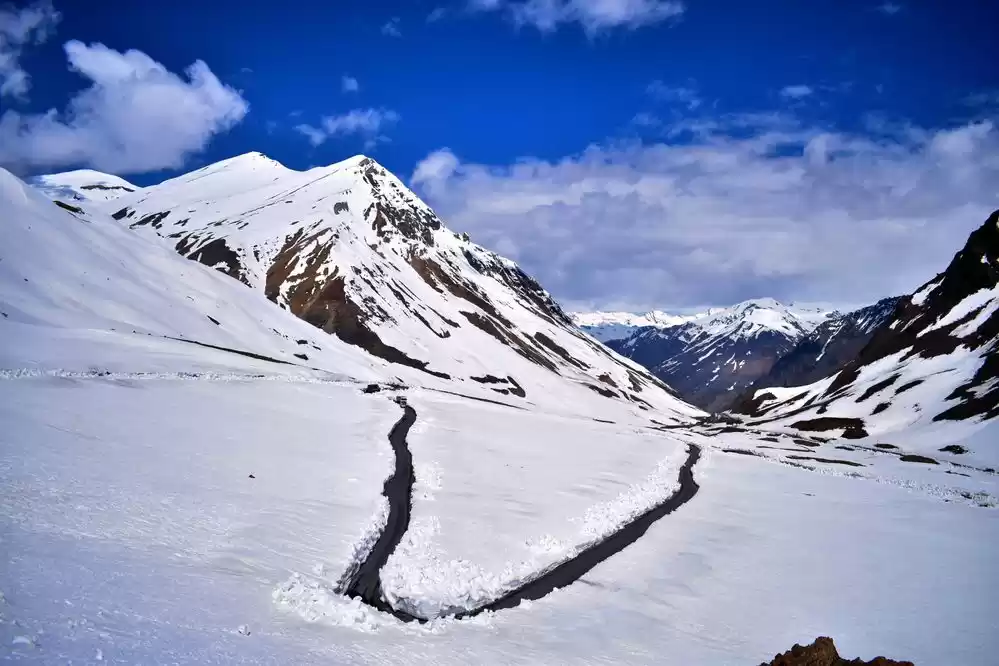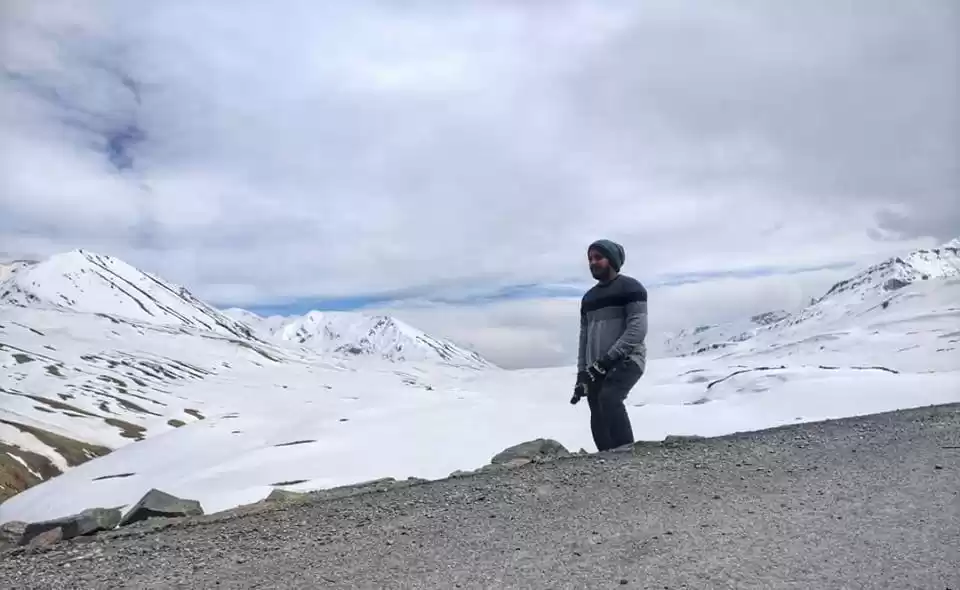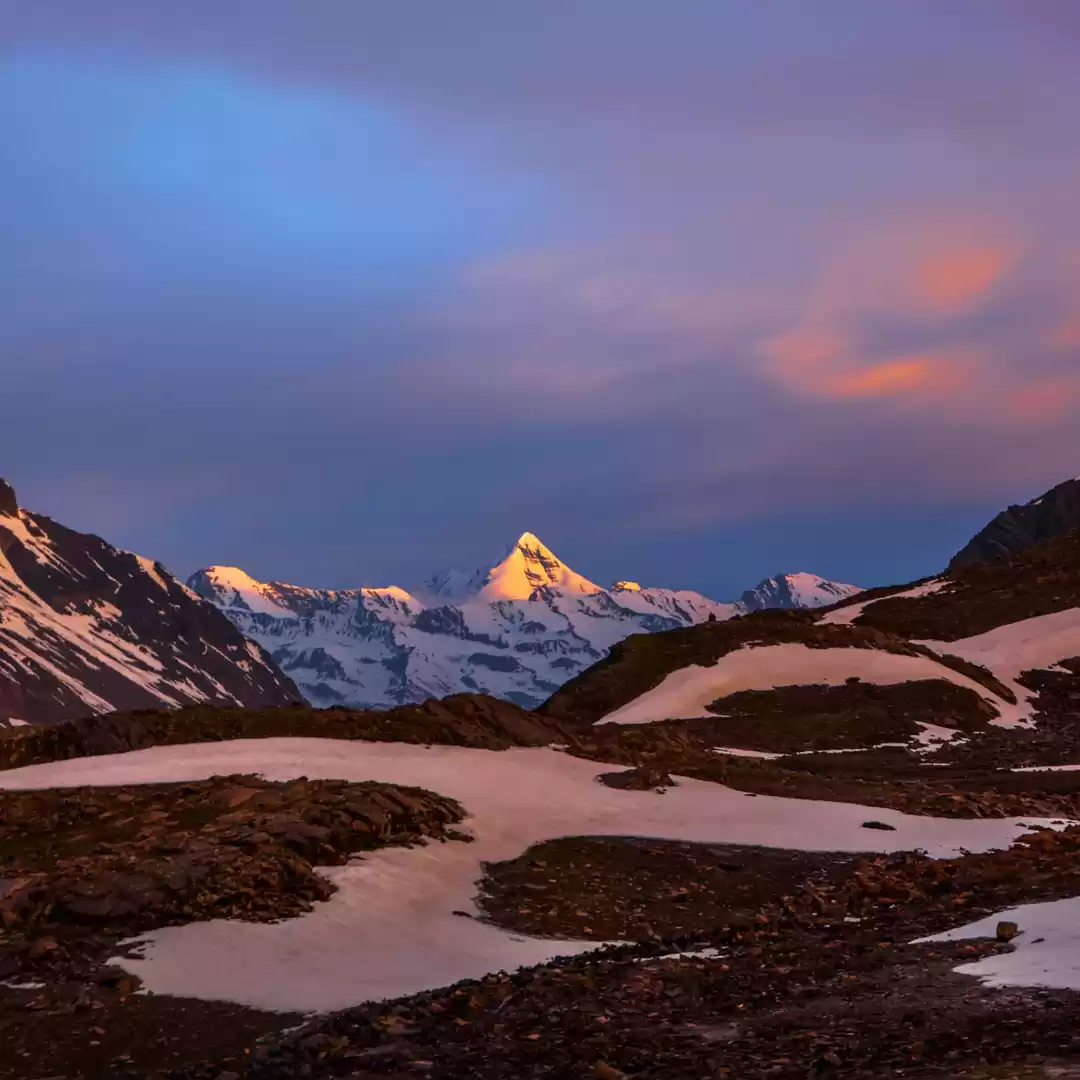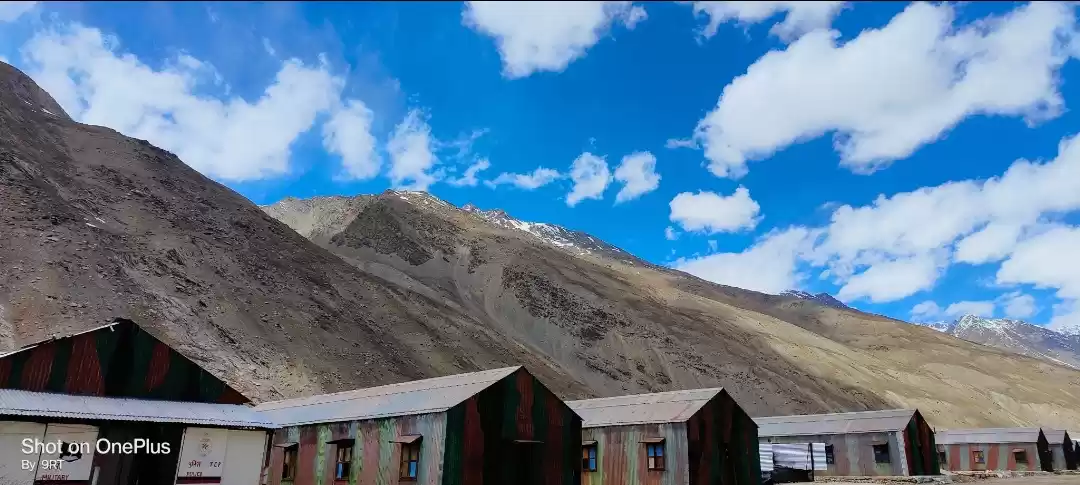If you are looking for a destination that combines breathtaking scenery, rich culture, and thrilling adventure, then look no further than the Baralacha Pass in the Spiti Valley of Himachal Pradesh. The Baralacha Pass is a high-altitude pass that lies at an elevation of 4,890 meters (16,040 feet) above sea level and connects the Lahaul Valley with the Spiti Valley.
t is also known as the crossroads of the Himalayas, as it is the meeting point of three mountain ranges: the Zanskar, the Pir Panjal, and the Lahaul. The Baralacha Pass is a part of the ancient trade route between Tibet and India and has a lot of historical and cultural significance.
It is also a popular destination for adventure seekers and nature lovers, as it offers various attractions and activities such as trekking, camping, biking, and photography. In this article, we will explore the Baralacha Pass in detail and provide you with all the information you need to plan your trip to this amazing place.
History and Legend of the Baralacha Pass
The name Baralacha means “a pass with crossroads” in Tibetan and refers to the fact that four roads meet at this point: one from Ladakh, one from Spiti, one from Zanskar, and one from Lahaul. The pass has been used for centuries by traders, pilgrims, and nomads who traveled between Tibet and India.

The pass also has a legend associated with it, which says that there was once a huge lake called Suraj Tal at this place, where the sun god used to bathe. One day, a dragon came and drank all the water from the lake, leaving behind a dry valley. The sun god was angry and cursed the dragon to become a mountain.
The dragon pleaded for mercy and promised to give water to the people who lived in the valley. The sun god agreed and allowed the dragon to become a mountain with four springs, one in each direction. These springs are said to be the sources of four rivers: the Bhaga, the Chandra, the Yunam, and the Tsarap.
Geography and Climate of the Baralacha Pass
The Baralacha Pass is located on the border of Lahaul and Spiti districts in Himachal Pradesh, India. It is about 73 kilometers (45 miles) from Keylong, which is the headquarters of Lahaul district. The pass is accessible by road from Manali via Rohtang Pass or from Leh via Sarchu. The road is part of the National Highway 21 (Leh-Manali Highway) and is open from June to October. The rest of the year, the pass is covered with snow and ice and is closed for traffic.
The Baralacha Pass has a cold desert climate with harsh winters and mild summers. The average temperature ranges from -15°C (5°F) in winter to 15°C (59°F) in summer. The pass receives very little rainfall and snowfall throughout the year. The air is thin and dry at this altitude and can cause altitude sickness or hypothermia if not acclimatized properly.
Also check out: Unbeaten : BARA-LACHA PASS, Himachal Pradesh
Attractions and Activities at the Baralacha Pass
The Baralacha Pass is not only a scenic spot but also a hub for various attractions and activities that can make your trip memorable and exciting. Some of these are:

Surya Tal Lake:
One of the main attractions near the Baralacha Pass is the Surya Tal Lake, which lies at an elevation of 4,883 meters (16,020 feet) above sea level. It is also known as Suraj Tal or Sun Lake and is considered sacred by Hindus and Buddhists. According to legend, this is where the sun god used to bathe before rising in the sky. The lake has a crystal-clear blue water that reflects the snow-capped peaks around it. It is also a source of the Bhaga River, which joins the Chandra River at Tandi to form the Chenab River.

Chandratal Lake:
Another beautiful lake that lies on the way to the Baralacha Pass is Chandratal Lake or Moon Lake. It is located at an elevation of 4,300 meters (14,100 feet) above sea level and is about 14 kilometers (8.7 miles) from Batal on NH21. It is also considered sacred by Hindus and Buddhists and is believed to be created by Lord Indra’s chariot. The lake has a crescent shape and a turquoise color that changes with the sunlight. It is also a source of the Chandra River, which joins the Bhaga River at Tandi to form the Chenab River.
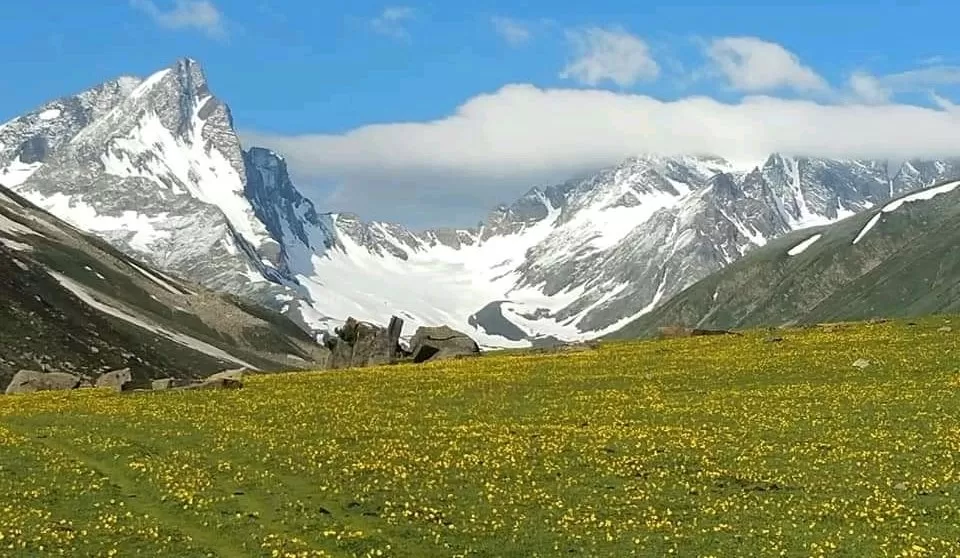
Zanskar, Pir Panjal, and Lahaul Ranges:
The Baralacha Pass is also the meeting point of three mountain ranges: the Zanskar, the Pir Panjal, and the Lahaul. These ranges are part of the Himalayas and have some of the highest and most spectacular peaks in the world. Some of these peaks are Shingo La (5,091 meters or 16,703 feet), Bara Shigri (6,552 meters or 21,489 feet), Mulkila (6,517 meters or 21,380 feet), and CB-13 (6,264 meters or 20,551 feet). These ranges offer stunning views and opportunities for trekking, mountaineering, and skiing.
Trekking, Camping, Biking, and Photography
The Baralacha Pass is also a paradise for adventure and nature lovers, as it offers various options for trekking, camping, biking, and photography. Some of the popular treks that start or end at the Baralacha Pass are:
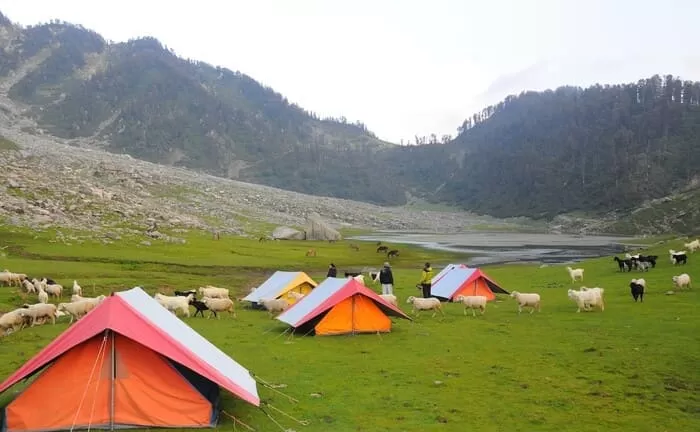
Chandratal Baralacha Trek:
This is a moderate to difficult trek that covers a distance of about 100 kilometers (62 miles) in 8 to 10 days. It starts from Manali and passes through Rohtang Pass, Batal, Chandratal Lake, Tokpo Yongma, Tokpo Gongma, Baralacha Pass, Suraj Tal Lake, and ends at Keylong. It offers amazing views of the lakes, glaciers, valleys, and peaks along the way.
Zanskar Baralacha Trek:
This is a difficult trek that covers a distance of about 150 kilometers (93 miles) in 12 to 15 days. It starts from Darcha in Lahaul and passes through Palamo, Zanskar Sumdo, Chumik Nakpo, Shingo La, Lakhang, Kargyak, Purne, Phuktal Monastery, Ichar, Mune, Padum, Reru, Martselang, Hemis Monastery, and ends at Leh. It offers an insight into the culture and lifestyle of the Zanskaris and their ancient monasteries.
Lahaul Spiti Baralacha Trek:
This is a moderate to difficult trek that covers a distance of about 120 kilometers (75 miles) in 10 to 12 days. It starts from Keylong in Lahaul and passes through Jispa, Darcha, Palamo, Zanskar Sumdo, Chumik Nakpo, Shingo La, Baralacha Pass, Suraj Tal Lake, Sarchu, Pang, More Plains, Tanglang La, Upshi, Thiksey Monastery, and ends at Leh. It offers a glimpse into the diversity and beauty of the Lahaul Spiti region and its people.
Besides trekking, one can also enjoy camping at various sites near the Baralacha Pass, such as Surya Tal Lake, Chandratal Lake, Zanskar Sumdo, etc. Camping under the starry sky with a bonfire and music can be a memorable experience. One can also opt for biking on the Leh-Manali Highway, which is one of the most challenging and scenic routes in the world.
Biking on this road can be an exhilarating and adventurous experience. One can also indulge in photography at the Baralacha Pass, as it offers some of the most stunning and picturesque views of the Himalayas. The pass is a photographer’s delight, as it captures the changing colors and moods of nature.
You may also like to check out: A Tale of two mountain passes – Mountain biking from Rohtang to Baralacha La!
Travel Tips and FAQs for Visiting the Baralacha Pass
If you are planning to visit the Baralacha Pass, here are some tips and FAQs that can help you make your trip smooth and enjoyable:
How to get a permit for visiting the Baralacha Pass?
You need to get an Inner Line Permit (ILP) for visiting the Baralacha Pass, as it lies in a restricted area near the Indo-China border. You can get an ILP online from [this website] or offline from the SDM office in Manali or Keylong. You need to carry your ID proof, passport size photos, and vehicle details (if applicable) for getting an ILP. The ILP is valid for 15 days and costs Rs. 400 per person.
How to prepare for high altitude and cold weather at the Baralacha Pass?
The Baralacha Pass is located at a very high altitude and has a very cold climate. Therefore, you need to prepare yourself physically and mentally for visiting this place. You need to acclimatize properly before visiting the Baralacha Pass. You need to spend at least two days in Manali or Keylong to adjust to the altitude and avoid altitude sickness.
You also need to drink plenty of water, avoid alcohol and smoking, and eat light and nutritious food. You also need to carry warm clothes, woolen socks, gloves, caps, sunglasses, sunscreen, and lip balm to protect yourself from the cold and the sun. You also need to carry a first-aid kit, medicines, oxygen cylinders, and emergency contacts in case of any health issues.
What are the safety precautions and emergency contacts for visiting the Baralacha Pass?
The Baralacha Pass is a remote and rugged area that requires a lot of caution and care while visiting. You need to follow the instructions of your guide, driver, or local authorities while traveling on the road or trekking on the trails. You need to avoid driving or walking at night, as the visibility is low and the road conditions are unpredictable.
You also need to avoid crossing or touching any streams, glaciers, or snowfields, as they may be slippery or unstable. You also need to be aware of the weather conditions and avoid traveling during heavy rain, snowfall, or landslides. You also need to respect the local culture and customs and avoid littering or harming the environment.
In case of any emergency, you can contact the following numbers:
Police: 100
Ambulance: 102
Disaster Management: 1077
Lahaul Spiti District Administration: 01900-222249
Himachal Pradesh Tourism Development Corporation: 01902-253531
What are the accommodation and food options near the Baralacha Pass?
The Baralacha Pass does not have any hotels or guest houses nearby, as it is a remote and isolated area. The nearest accommodation options are in Keylong, which is about 73 kilometers (45 miles) from the pass. Keylong has some budget hotels, guest houses, and homestays that offer basic facilities and amenities. Some of these are:
Hotel Chandra Bhaga: A budget hotel that offers rooms with attached bathrooms, TV, hot water, and room service. It also has a restaurant that serves Indian, Chinese, and Tibetan cuisine. The tariff ranges from Rs. 800 to Rs. 1200 per night.
Hotel Dekyid: A guest house that offers rooms with attached bathrooms, TV, hot water, and room service. It also has a restaurant that serves Indian, Chinese, and Tibetan cuisine. The tariff ranges from Rs. 700 to Rs. 1000 per night.
Tashi Delek Homestay: A homestay that offers rooms with attached bathrooms, TV, hot water, and room service. It also has a kitchen that serves home-cooked food. The tariff ranges from Rs. 500 to Rs. 800 per night.
Alternatively, you can also opt for camping near the Baralacha Pass or Chandratal Lake, which can be arranged by some tour operators or local guides. Camping can be a fun and adventurous way to experience the nature and beauty of the Baralacha Pass. However, you need to carry your own tents, sleeping bags, mats, stoves, utensils, food, water, and other essentials for camping.
The food options near the Baralacha Pass are also limited, as there are no restaurants or cafes nearby. The nearest food outlets are in Keylong or Batal, which offer some basic snacks, such as maggi, bread, eggs, tea, coffee, etc.
You can also find some dhabas or roadside eateries along the Leh-Manali Highway, which serve some local dishes, such as thukpa, momos, chowmein, etc. However, you need to be careful about the hygiene and quality of the food, as it may not be suitable for everyone. You can also carry your own dry fruits, nuts, chocolates, biscuits, energy bars, etc. to munch on while traveling or trekking.
The Baralacha Pass is a unique and fascinating destination that offers a blend of nature, culture, and adventure. It is a place where you can witness the beauty and mystery of the Himalayas, explore the ancient and sacred lakes, and indulge in some thrilling and fun activities. It is a place that will leave you spellbound and mesmerized by its charm and splendor. If you are looking for a trip that will challenge you, inspire you, and enrich you, then the Baralacha Pass is the perfect choice for you.
So what are you waiting for? Book your trip to the Baralacha Pass today and get ready for an unforgettable experience.
As the famous explorer Ibn Battuta said, “Traveling - it leaves you speechless, then turns you into a storyteller.” So go ahead and make your own story at the Baralacha Pass.





